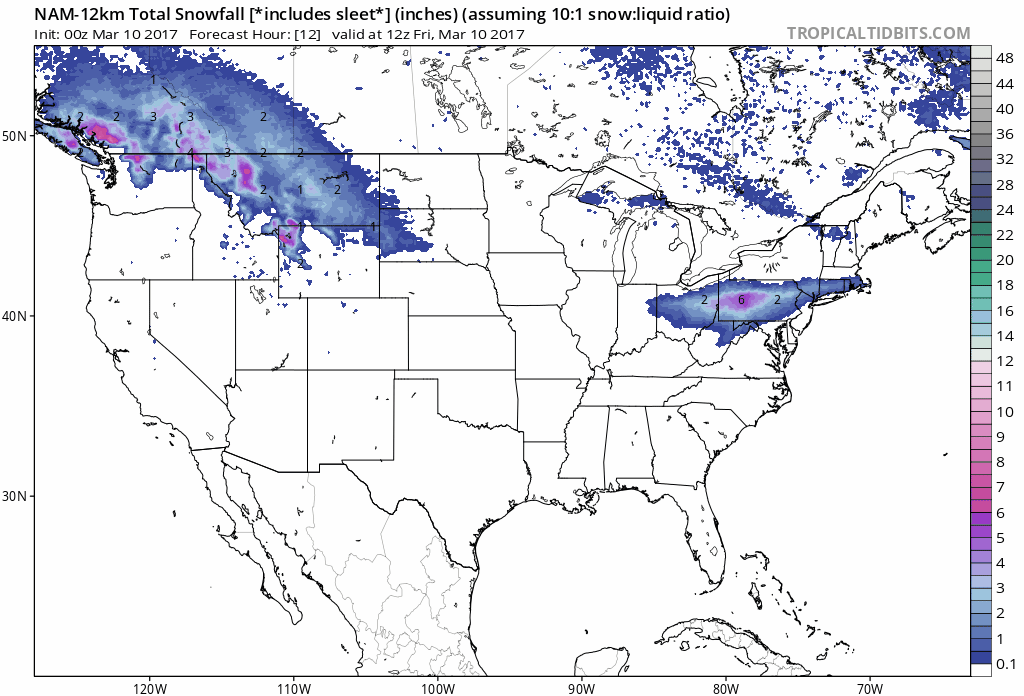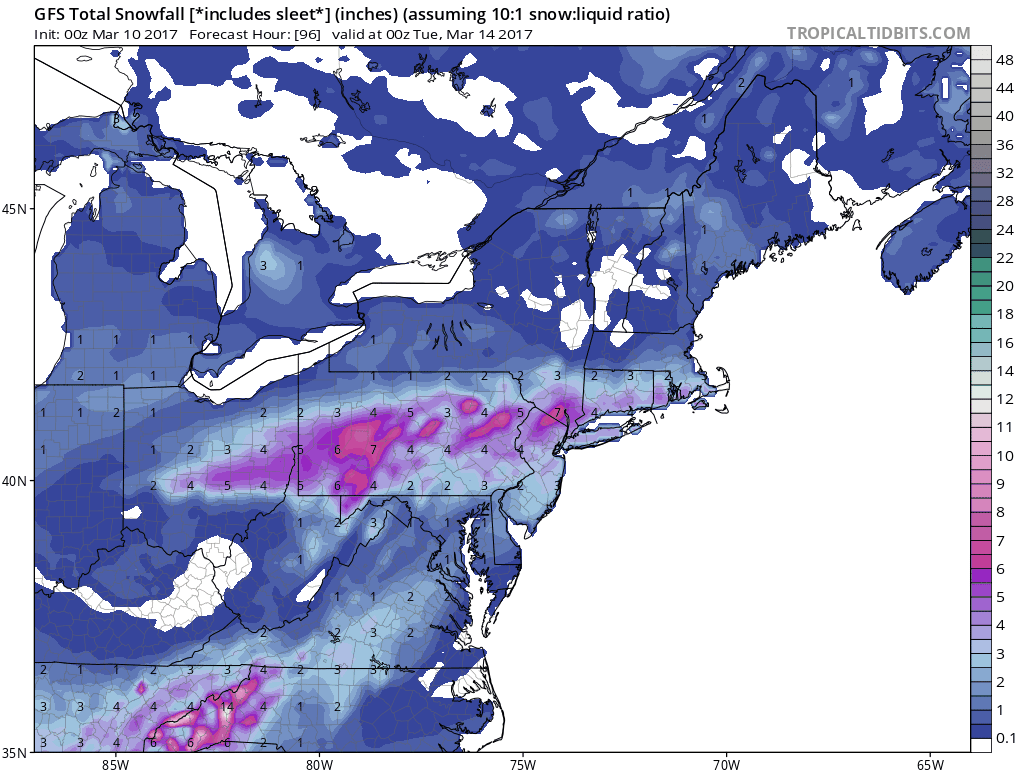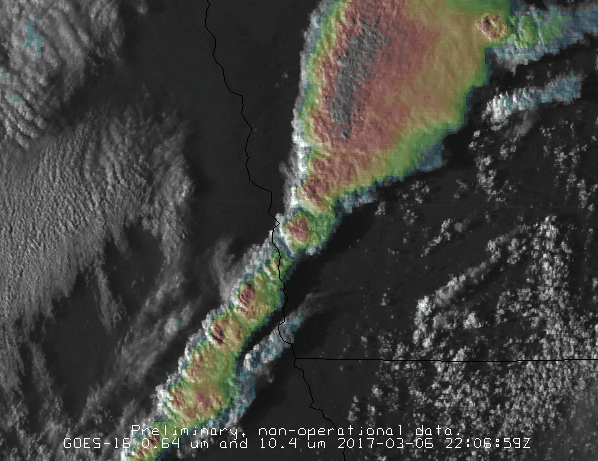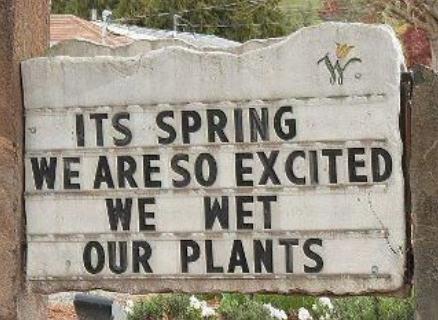35 F. average high on March 9.
38 F. high on March 9, 2016.
March 10, 2012: The record high of 66 degrees at the Twin Cities is the first of 8 record highs in a 10-day span.
March 10, 1948: Bitterly cold conditions, especially for March, occur in Minnesota. A low of -44 is reported at Itasca.

February Relapse, but 50 Degrees Is A Week Away
Legendary Minnesota winters have been partially defanged. They've lost some of their bite. Today zero is the new 20 below. Snow day? Dream on. Since 1970 meteorological winters in the Twin Cities have warmed 5.4 F. According to Dr. Mark Seeley 15 of the last 20 winters have been warmer than normal.
I explain that roughly 1 in 4 winters now are "old fashioned", with average snow (50 inches or more) and the kind of polar pain that once made Americans wince at the thought of spending a winter here.
Spring has arrived 3 weeks early over the southern half of the USA but a wintry relapse will grip the Midwest to New England into early next week. Today is the coldest day for Minnesota; a chill factor of -10 F at the bus stop this morning. A couple of super-sized clippers will drop plowable snow (3 inches or more) from the Dakotas to Des Moines, Nashville and the Carolinas. Both GFS and ECMWF are printing out 1-2 FEET of snow for the Northeast, including major coastal urban areas, late Monday into Wednesday. Next week may be wild from Boston and New York to D.C.
Once of these clippers will spread light snow into much of Minnesota Sunday PM into midday Monday, and I could see a couple inches of slush. Whatever falls will melt within 36 hours or so. The beauty of a mid-March snowfall. We get off relatively easy with a couple inches late sunday.
Winter's last gasp? Probably. A mild, Pacific flow returns within 4-5 days. Highs nudge 50 F. in the metro in about a week or so.
Enjoy the cold front!

Short-Term Snow Potential. Clipper #1 takes a more southerly track, spreading accumulating snow from the Dakotas into St. Louis, Chattanooga and the Carolinas - plowable amounts of snow are possible across the Mid South and Carolinas; one of the bigger potential snowfalls of a fairly tame winter season. 84-hour NAM snowfall product: NOAA and Tropicaltidbits.com.

Nor'Easter Risk Grows Early Next Week. Both GFS (above) and ECMWF spin up a major coastal storm capable of 1-2 foot snowfall amounts from near Washington D.C. and Philadelphia and New York. The heaviest amounts may pile up west of I-95 and it's still very early to talk amounts and timing. But it looks ripe, and there should be sufficient cold air in place for a major dumping - possibly the biggest of the winter.
46 Confirmed Tornadoes in March 6-7 Outbreak. U.S. Tornadoes confirms 63 reports, 90 warnings and 6 watches. Here's an excerpt from a post detailing the biggest tornado outbreaks of 2017, nationally, to date: "...Another in a late-winter and early-spring volley of storm systems, this one was the farthest west outbreak so far this year. While many of the tornadoes were QLCS-type, spinning up within lines and broken lines, several supercells dropped tornadoes as well. The Kansas City area was particularly hard hit as an EF3 struck east of town. Fortunately, no one was killed despite relatively high impact..."

A Note to the Weather Community About Using GOES-16 Data. It's still in beta, so buyer beware. But damn, the imagery is spectacular! Here's an excerpt from NOAA NESDIS: "NOAA's
National Environmental Satellite, Data, and Information Service
appreciates the enthusiasm in the weather community and support for our
newest on-orbit satellite, GOES-16, which will enhance the weather
forecasts that save lives and protect property nationwide. At this time,
data from GOES-16 are considered preliminary and are undergoing
validation testing. NOAA is therefore requesting that any organizations
that redistribute GOES-16 data -- before it is declared operational --
include the following disclaimer with the data:
"NOAA's GOES-16 satellite has not been declared operational and its data are preliminary and undergoing testing."
La Crosse County Sees Earliest Tornado on Record. Wisconsin Public Radio has the story: "Damage
in La Crosse County originally attributed to high winds during Monday
night’s storm is actually the result of a tornado. The National Weather
Service researchers confirmed the tornado after surveying the area Wednesday. The
twister touched down north of Barre Mills, skipping northeast for 3
miles. NWS researchers say the storm only lasted for 5 minutes and was
rated a EF1 on the 5-point scale used to rate tornadoes. The tornado is the earliest on record in western Wisconsin, after the region experienced a mild end to winter..."
Record Warmth for Meteorological Winter. Yes, it was a top 3 warmest December though February for muh of America east of the Rockies. Here's an excerpt from NOAA NCEI: "The stations shown on the map below had one of their three warmest, coolest, wettest or driest winters on record this year. Stations with a bold white circle saw values that exceed any previous December-through-February value at the station's current location. The smaller circles indicate year-to-date outcomes that were 2nd or 3rd place among a station's history..."
Tech Tornado Researchers Return to Southeast for VORTEX-SE. Another round of in-the-field research is scheduled for mid-May. Here's an excerpt from Plainview Daily Herald: "...Associate professors Chris Weiss and Eric Bruning and graduate research assistants Aaron Hill and Vanna Chmielewski – all from the atmospheric science group within the Department of Geosciences – arrived in Alabama early last week to deploy equipment for the second year of the Verification of the Origins of Rotation in Tornadoes Experiment-Southeast (VORTEX-SE), which runs March 8 through May 8. Team members are now stationed in Huntsville to await signs of potentially dangerous storms. Their equipment includes lightning mapping array sensors that will be deployed ahead of storms to map characteristics of lightning strikes, including size and channel length; dozens of weather balloons to measure changes in temperature, wind and moisture content at different heights; and 24 StickNet platforms that measure temperature, pressure, humidity and wind to understand how atmospheric states change around developing tornadoes. Sixteen StickNets are already in place to gather long-range data while the other eight will be deployed directly in the path of oncoming storms..."
Photo credit:
8 Fossil Fuel Majors Seen Polluting as Much as U.S. Bloomberg has the story: "Eight of the world’s largest oil companies are responsible for as much of the climate-damaging pollution spewed into the atmosphere as the entire U.S., according to a study by a London-based researcher. Saudi Aramco, Exxon Mobil Corp., OAO Gazprom, the National Iranian Oil Co., BP Plc and Royal Dutch Shell Plc were among the eight companies whose fuel was responsible for a third of emissions from oil and gas, according to the non-profit group CDP. The companies released a fifth of all greenhouse gases outside of farming and forestry since 1988, the year most governments acknowledged man-made climate change as a risk..."
File photo credit: Vivek Prakash, Reuters.
Clean Energy Is Now as Big as Pharmaceutical Manufacturing in the U.S. Here's a clip from Vox: "...In
the US, the story is much the same: The advanced energy industry is
big! As of last year, it brought in $200 billion in revenue, which is
“nearly double beer sales, equal to domestic pharmaceutical
manufacturing, and approaching wholesale consumer electronics.” That’s
up 28 percent since 2010. The industry now supports 3.3 million jobs in
the US..."
Graphic credit: Guardian graphic | Source: SolarPower Europe.
Will Electric Cars Soon Have Solar Roofs? Toyota and Tesla Say Yes. Driving for free - what a concept. Here's an excerpt from ThinkProgress: "Last week, Panasonic announced
an advanced solar panel system that will debut on the 2017 model Toyota
Prius plug-in hybrid in Japan (the Prius Prime). It is “the first
commercially available, mass-produced passenger car to feature an
optional solar charging system,” PV magazine explained.
Panasonic notes that, previously, rooftop solar cells had outputs of
only “several tens of watts.” So they were used only for ventilating
parked cars and “auxiliary charging” of the standard 12-Volt lead-acid
battery. But improvements in solar efficiency combined with advanced
design and “technologies to laminate three-dimensional curved glass”
have allowed a high output — some 180 watts, which is more than triple
the output of the previous solar roof..."
Image credit: Panasonic via NewAtlas.com.
Bentley's First-Ever, Electric Concept Car is a Luxury Fever Dream. BloombergPursuits has more details: "Although most of the notable debuts at the Geneva Motor Show are teased months ahead of
time, Bentley came out swinging on Tuesday with a surprise showing of
the marque's first-ever, pure-electric concept. The Bentley EXP 12 Speed
6e Concept is meant to explore the possibility of Bentley producing a
true all-electric vehicle for production; it’s a separate endeavor from
the recently promised plug-in hybrid Bentayga SUV, which is due out in
2018. If it is received well by VIP guests and analysts at future car
circuit stops in Shanghai and Pebble Beach, Calif., said execs, the
convertible could lead to an electric vehicle from Bentley by 2021. (The
car, while drivable, is one of one, so in order to prevent damage it
will not be available for prospective buyers to drive.)..."
With Claims of CIA Hacking, How to Protect Your Devices. Here's a clip from The New York Times: "...Many
iPhone owners are far more up-to-date with their mobile software than
Android device owners. So only a minority of iPhone users have devices
with the versions of the Apple iOS operating system that the WikiLeaks
documents mention. Specifically, the WikiLeaks documents referred to
exploits working on versions of iOS up to 8.2. About 79 percent of Apple
users are running iOS 10, the latest version of the system, and only 5
percent are running a version older than iOS 9, according to Apple. In
raw numbers, with more than one billion iOS devices sold worldwide, that
amounts to at least 50 million people running the outdated software..."
Cable Cars are Changing the World. Increasingly they are seen as a cost-effective way of transporting people across urban areas, according to How We Get to Next: "...Countries
around the globe are now rushing to construct cable car systems in much
the same way that they were rushing to construct monorails a few decades ago. The success of the Medellín project inspired its local neighbor, Caracas, to construct its own mass transit cable car, as well as other projects in Brazil, Bolivia, Chile, Peru, and Colombia’s capital, Bogotá. In Iran, the Tochal Telecabin system carries winter sports enthusiasts from the city of Tehran to the enormous Tochal ski complex. In Armenia, the Wings of Tatev cable car ferries religious tourists to the Tatev monastery year-round. Mexico City has a proposal for a cable car, as does Haiti, Vietnam, Lagos, Mombasa, and many other places. The list of current proposals that The Gondola Project tracks is enormous..."
Graphic credit: Darren Garrett
Where Residents are Happiest - and Not so Cheery. The happiest people in America live in Naples, Florida? CNN.com has details: "...The Naples-Immokalee-Marco Island metro area was tops in contentment for the second year in a row, according to the Gallup-Healthways 2016 well-being rankings.
The survey says residents there feel safer than residents in any other
community in the nation. The Town of Barnstable, Massachusetts, and
Santa Cruz-Watsonville, California, took second and third place overall
in the composite index. The border city of Fort Smith, Arkansas, on the
other hand, ranked lowest of 189 communities measured. Gallup measures
the well-being of a community based on interviews gauging resident's
feelings about their financial position, community, health and safety..."
Photo credit: Greater Naples Chamber of Commerce.
Hot Story: Miami Lawyer's Pants Erupt in Flames During Arson Trial in Court. You just can't make this stuff up. The Miami Herald reports: "...A
Miami defense lawyer’s pants burst into flames Wednesday afternoon as
he began his closing arguments in front of a jury — in an arson case.
Stephen Gutierrez, who was arguing that his client’s car spontaneously
combusted and was not intentionally set on fire, had been fiddling in
his pocket as he was about to address jurors when smoke began billowing
out his right pocket, witnesses told the Miami Herald. He rushed out of
the Miami courtroom, leaving spectators stunned. After jurors were
ushered out, Gutierrez returned unharmed, with a singed pocket, and
insisted it wasn’t a staged defense demonstration gone wrong, observers
said..."

TODAY: Cold sun. -10 W.C. early. Winds: N 8-13. High: 22
FRIDAY NIGHT: Partly cloudy. Low: 7
SATURDAY: Mostly cloudy, few flakes possible. Winds: N 7-12. High: 26
SUNDAY: Clipper, light accumulation PM hours, 1-2" possible. Winds: E 5-10. Wake-up: 13. High: 28
MONDAY: Light snow tapers to flurries, icy roads. Winds: NE 10-15. Wake-up: 18. High: 27
TUESDAY: Sunny, better travel conditions. Winds: NW 7-12. Wake-up: 13. High: 34
WEDNESDAY: Partly sunny and milder. Winds: S 7-12. Wake-up: 20. High: 43
THURSDAY: Intervals of sun, feels like March. Winds: S 10-15. Wake-up: 27. High: 47

TODAY: Cold sun. -10 W.C. early. Winds: N 8-13. High: 22
FRIDAY NIGHT: Partly cloudy. Low: 7
SATURDAY: Mostly cloudy, few flakes possible. Winds: N 7-12. High: 26
SUNDAY: Clipper, light accumulation PM hours, 1-2" possible. Winds: E 5-10. Wake-up: 13. High: 28
MONDAY: Light snow tapers to flurries, icy roads. Winds: NE 10-15. Wake-up: 18. High: 27
TUESDAY: Sunny, better travel conditions. Winds: NW 7-12. Wake-up: 13. High: 34
WEDNESDAY: Partly sunny and milder. Winds: S 7-12. Wake-up: 20. High: 43
THURSDAY: Intervals of sun, feels like March. Winds: S 10-15. Wake-up: 27. High: 47
Climate Stories....
Map credit: "February temperature anomalies over North America. ECMWF analysis compared to ERA-interim 1981-2010."
What Keeps Global Security Academics Awake at Night? Here's an excerpt from The Interpreter: "...By a factor of three, the key threat to global security identified was climate change. For many, climate change constituted the most fundamental existential threat, especially if our focus is the global rather than the national. As one respondent put it, ‘the globe can survive most other things’. At second place was poverty and inequality. Respondents noted the ongoing devastating effects of poverty and the effects of growing inequality on both life choices and the surge of destructive ideologies. On this score, nationalism finished a close third, with respondents pointing to the dangers of a world of states turning inward even while global action to address global problems (like climate change) seems more necessary than ever..."
File photo: AFP.
Chronology of Military and Intelligence Concerns About Climate Change. Here's an excerpt of a story at The Center for Climate & Security: "...This concern didn’t happen overnight, or under a single administration. Rather, it’s the culmination of decades of assessments stretching back to the end of the Cold War. In popular discourse, it’s often assumed that climate change is a brand new issue for the national security world – an interloping latecomer. The truth is that it’s not. The U.S. military has been concerned about climate change since the George W. Bush Administration, at the latest, but military institutions such as the Naval War College have been warning policy-makers since 1990, during the first Bush Administration. The intelligence community has also been in the game since the early 1990s, with the establishment of the MEDEA program – a structured collaboration between climate scientists and U.S. intelligence agencies – and has been releasing intelligence estimates on the national security implications of climate change since 2008, under the direction of then Chairman of the National Intelligence Council, Dr. Thomas Fingar..."
Image credit: "Scientist-hackers are saving data from NASA, NOAA, and EPA. (MIT Lincoln Laboratory)."

Illustration credit: Yann Kebbi.
Spring Came Early. Scientists Say Climate Change is a Culprit. Here's an excerpt of a New York Times analysis: "...The
new research shows a strong link between global warming and the very
warm February that helped to drive the extremely early spring this year.
For the entire continental United States, February 2017 was the second
warmest on record, and mean temperatures were especially high east of
the Rockies: as much as 11 degrees Fahrenheit above normal. The study,
by scientists working as part of a group called World Weather Attribution,
looked at the influence of climate change on the temperatures, using
models of the atmosphere as it exists and of a hypothetical atmosphere
with no greenhouse gas emissions and thus no human-driven climate
change. They found that a warm February like the one just experienced is
about four times more likely in the current climate than it would have
been in 1900, before significant emissions began to change the climate..."
A Tornado in Early March? In Minnesota? Really? Republican Tim Reckmeyer makes a convincing case for bipartisan action in this Op-Ed at Star Tribune; here's an excerpt: "...In
colder climates, like ours, winter-based recreational activities, like
skiing, ice fishing, and snowmobiling are less prevalent. This has
effects on local businesses and kids who just want to play pond hockey
throughout winter. The frequency of Lyme disease in Minnesota is
increasing because more disease-carrying insects, like ticks, survive
milder winters. Allergy season is already 21 days longer than it was in
1995, and pollen counts are rising, which can trigger respiratory
illnesses for allergy sufferers. This can have deadly implications for
children and the elderly. The most important actions we can take are to
support smart progrowth economic policies that reduce our energy waste
and fully embrace clean energy to power our modern world. Doing so will
stabilize our climate and winters, reduce the risks of further damage to
our economy, and immediately provide better health via cleaner air and
water..."
Photo credit: David Joles, Star Tribune. "The entire side of a house was blown off during a storm Monday evening in Orrock Township near Zimmerman, Minn."
Study: Climate Change May Hurt Nation's Agricultural Productivity. Here's an excerpt from Iowa Public Radio: "...They
found that without changes to farm policy and improvements to
agricultural technology, the nation’s productivity in 2050 could look
like it did in 1980. That’s because at the present rates of innovation,
new technologies won’t be able to keep up with the damage caused by the
changes in climate in our major growing regions. Lead author Xin-Zhong
Liang, a professor at the University of Maryland, says both policymakers
and those who work directly in agriculture should consider changes that
might prevent this drop. On the policy side, Liang said, changes to
water management could help. On the technology side, the development of
seeds that can withstand more extremes of heat and rain would likely
help mitigate the climate’s impact on overall productivity..."
Photo credit: "Farming
in the Midwest could suffer under future climatic conditions. A new
study says if the threats aren't addressed, future US food production
could be lower than necessary to meet global demand." Harvest Public Media file photo.
ConocoPhillips CEO Says U.S. Should Stick With Paris Climate Deal. Axios has the details.
Trees Might Not Be Able to Store as Much Carbon As We Thought, New Study Suggests. An article at CNBC highlights new research raising concerns that soil nutrients may not be sufficient for plants to process increasing CO2 efficiently: "Researchers at Western Sydney University (WSU) in Australia have found that "common" Australian trees do not store as much carbon as had been previously assumed, a discovery that could have big implications on how we tackle climate change. According to a news release from the university, the study, published in the journal Nature Climate Change, found that Eucalyptus forests may require extra soil nutrients to grow and "take advantage" of additional carbon dioxide (CO2) in the atmosphere. Large areas of "remnant native eucalypt forest" were exposed to heightened levels of CO2 at a WSU facility. Researchers found that while the extra CO2 increased levels of photosynthesis, it did not result in increases in leaves, stems and wood..."
No comments:
Post a Comment